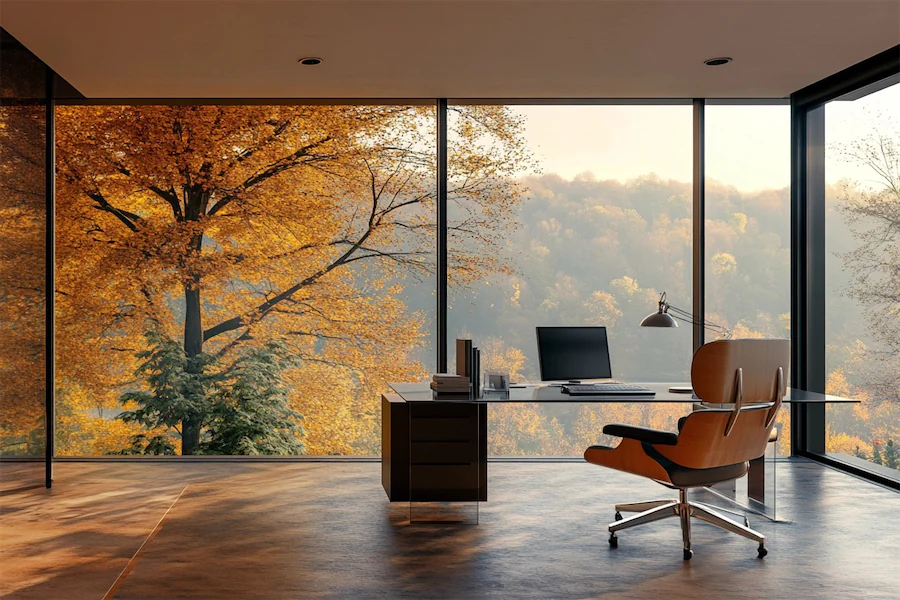A Glass House office room integrates extensive glass elements to create a workspace that is open, filled with natural light, and connected to its surroundings.
Introduction to Glass House Office Rooms
Glass House office rooms utilize transparent or translucent glass walls, partitions, and facades to foster an environment that feels spacious and modern. This design approach enhances visibility, encourages collaboration, and allows for an abundance of natural light, contributing to a pleasant and productive workspace.
History and Origins of Glass House Office Rooms
The concept of using glass extensively in architecture gained prominence in the early 20th century with the advent of modernist design. Architects like Philip Johnson, with his iconic Glass House, showcased the aesthetic and functional potential of glass in building design. Incorporating glass into office spaces became popular as businesses sought to create open and transparent environments that reflect contemporary values of openness and connectivity.
Key Features of Glass House Office Rooms
- Extensive Use of Glass: Incorporation of large glass panels for walls, partitions, and facades to maximize transparency and light.
- Open Floor Plans: Designs that minimize enclosed spaces, promoting openness and flexibility.
- Natural Light Optimization: Strategic placement of glass elements to enhance daylight penetration, reducing the need for artificial lighting.
- Minimalist Aesthetics: Clean lines and uncluttered spaces that emphasize simplicity and functionality.
- Integration with Nature: Designs that blur the boundaries between indoor and outdoor spaces, often incorporating views of the surrounding environment.
Applications of Glass House Office Rooms
- Corporate Offices: Creating transparent and collaborative environments that reflect modern corporate culture.
- Home Offices: Designing personal workspaces that are bright, open, and connected to the home environment.
- Co-working Spaces: Establishing shared work environments that foster interaction while providing visual privacy.
Considerations When Designing a Glass House Office Room
- Privacy: Implementing solutions like frosted or tinted glass, blinds, or curtains to balance openness with the need for confidentiality.
- Acoustics: Addressing sound transmission issues inherent with glass by using acoustic treatments or specialized glass.
- Energy Efficiency: Selecting high-performance glazing to manage heat gain and loss, ensuring a comfortable indoor climate.
- Safety: Using tempered or laminated glass to enhance safety and comply with building regulations.
Conclusion
A Glass House office room offers a contemporary and elegant workspace that leverages transparency and natural light to create an inspiring environment. By thoughtfully incorporating glass elements and addressing considerations like privacy and acoustics, such a design can enhance both aesthetics and functionality in various office settings.
